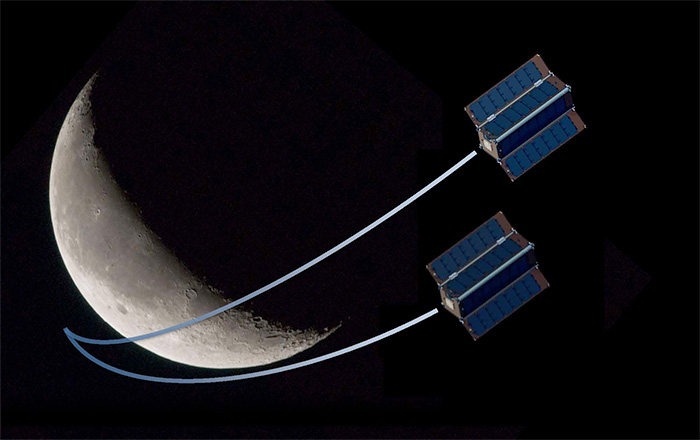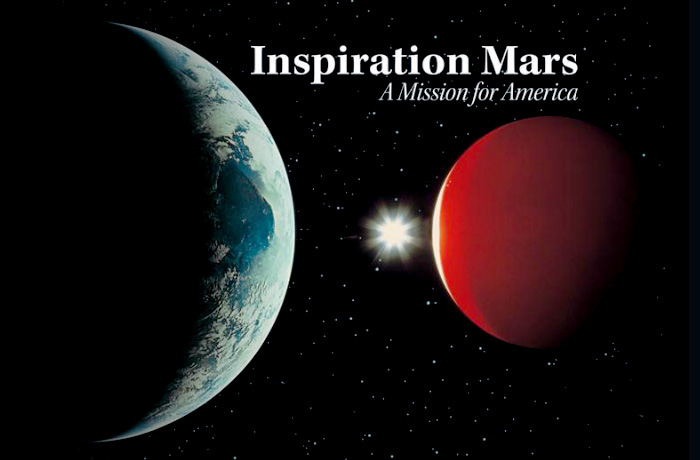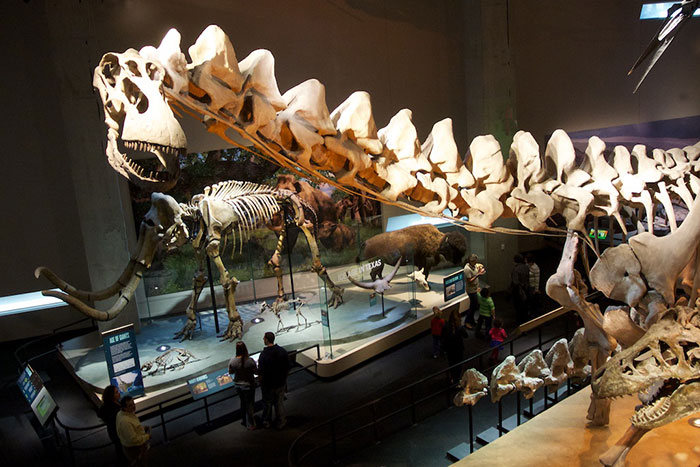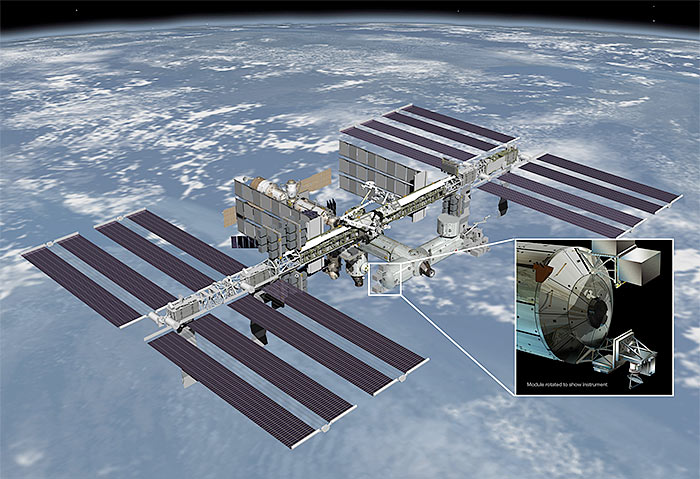
The NASA CubeSat Launch Initiative has selected more than two dozen satellites, including JPL’s Interplanetary NanoSpacecraft Pathfinder In Relevant Environment (INSPIRE), for launch in 2014-2016.

The NASA CubeSat Launch Initiative has selected more than two dozen satellites, including JPL’s Interplanetary NanoSpacecraft Pathfinder In Relevant Environment (INSPIRE), for launch in 2014-2016.

Dennis Tito, the first citizen space explorer to visit the International Space Station, has created the Inspiration Mars Foundation to raise funds for an even more dramatic mission: a human flyby of the planet Mars.

Reusable suborbital vehicles may revolutionize scientific research with frequent access to space. The potential partnership between commercial industry and space science is similar to a partnership which has benefitted ocean science for the past several years.
The Week has published an article on citizen space exploration, or space tourism, as they prefer to call it.
We dislike the term “space tourism” because of the way it is misused by detractors to disparage citizen space travel as a frivolous activity for rich vacationers. Their usage of the word tourism is actually quite ignorant. The travel industry uses the “tourism” to include business tourism as well as vacation tourism. To quote one website, “Business tourism is one of the leading and most dynamically developing spheres of world economy.” Together, leisure and business tourism are the world’s largest industry; there is nothing frivolous about it.
[youtube=http://www.youtube.com/watch?v=-RR1w7_pyl0&w=700]
Leaving that quibble aside, the authors make one factual error. They ask, “Who first proposed space tourism?” and answer that it was Pan Am Airlines in 1968. That answer is not even close.
G. Harry Stine discussed public space travel in his book Earth Satellites and the Race for Space Superiority, which was published a few weeks after Sputnik but written (except for some brief introductory material) before.
Nor was Stine the first. The fact is, prior to the start of the US-Soviet space race, no one assumed that spaceflight would be a monopoly of government space agencies and government astronauts. Most people who thought about space travel at all assumed it would develop similar to the way air travel had developed, with short-range suborbital flights leading to longer-range suborbital flights and finally orbit.
Public space travel is often viewed as an anomaly, a distraction from the “serious” work of government space exploration. Nothing could be farther from the truth. The Space Race led the US down a false path toward the development of quick and dirty, but ultimately unaffordable, launch systems based on throw-away missile technology. After a long detour, we are finally returning to the road we would have followed in the 1960’s, if not for Sputnik.

This weekend, we finally got a chance to visit the new Perot Museum of Natural History and Science in downtown Dallas — a great place to see dinosaurs and space.
The new museum has been insanely popular since its opening. Advance tickets are strongly recommended and the museum often sells out, especially on weekends. It has been so popular that the nearby Dallas Museum of Art has gone to free admission, in order to compete.
Another sign that the American public is “apathetic about science”?
NASTAR Center and the NASTAR Foundation have announced an exciting series of one-day professional-development workshops for teachers this summer.
All workshops, which are free for teachers, will take place at NASTAR Center, one of the world’s premiere commercial space training facilities.
In 2007, Time magazine proclaimed the Ford Model T to be one of the “50 Worst Cars of All Time.”
NASA astronaut Don Petit performs a number of microgravity science experiments with improvised materials aboard the International Space Station. We hope this video will inspire you to answer our Call For Experiments to fly aboard the XCOR Lynx spacecraft.
[youtube=http://www.youtube.com/watch?v=jXYlrw2JQwo&w=700]
Citizen space explorers and space entrepreneurs will appear at the prestigious South By Southwest (SxSW) film, music, and interactive-media festival, which takes place in Austin next month.
A panel on “Crowd-sourcing the Space Frontier” will include Anousheh Ansari, who visited the International Space Station in 2006 and was name sponsor for the Ansari X-Prize in 2001, and Citizens in Space project manager and citizen-astronaut candidate Edward Wright.
Also participating on the panel will be NASA Open Innovation Program manager Christopher Gentry and Darlene Damm, founder and co-president of DIY Rockets. The panel will run from 11:00 am to noon on Saturday, March 9.
Richard Garriott de Cayeux, who visited the International Space Station in 2008, will speak on “The New Golden Age of Spaceflight” at 11:00 Monday, March 11. Garriott de Cayeux is also vice-chairman of Space Adventures, which markets flights to the International Space Station.
Also on Saturday will be a keynote address by SpaceX founder Elon Musk, at 2:00 PM.
South by Southwest attracts over 32,000 people each year. Admission to these talks will require an Interactive, Gold, or Platinum Badge. Badges are still available at walkup rates of $1150, $1350, or $1595. (Sorry, we do not have any free or discount passes to hand out.)
A large meteor strike has been reported in Chalyabinsk, Russia, about 1500 kilometers east of Moscow. Reports indicate major damage to buildings, including a roof collapse at a zinc factory, and at least 102 people injured, many from broken glass, according to Associated Press.
The impact reportedly occurred at 9:20 AM local time, or 0320 GMT (10:20 PM EST).
[Update: Russia Today now puts the injuries at 950, including 159 children. 110 people are reported to be hospitalized. Nearly 3,000 buildings are reported to be damaged, including 34 medical facilities and 361 schools. There are no reports of fatalities yet, about half the windows in the city are broken, so there is danger from the cold.]
[Three impact craters have been found, one about 6 meters in diameter. Most of the damage appears to have been from the sonic boom. Based on data from five infrasound monitoring stations and calculations by Peter Brown at the University of Western Ontario, initial size estimates for the object have been revised upward. The current estimate puts the object, prior to entering the Earth’s atmosphere, at 49-55 feet in diameter (15-17 meters) and mass 7,000 to 10,000 tons. The energy released is estimated at nearly 500 kilotons. The event lasted for 32.5 seconds from atmospheric entry to the airborne disintegration. This is considered to be a 100-year event, which can be expected to happen about once in a a Century. Still, it could have been a lot worse.]
[It now appears this object came in on a different trajectory and was not related to 2012 DA14.]
It’s shocking that Near Earth Objects, which have so much potential for destruction, get so little respect. The recent National Academy of Sciences report on NASA’s Strategic Direction and the Need for a National Consensus, which dissed asteroid missions, is a good example. Perhaps this event will serve as a wakeup call for beltway insiders.
[youtube=http://www.youtube.com/watch?v=36MEsWC1Pzc&w=700]
[youtube=http://www.youtube.com/watch?v=XDqYclzto7k&w=700]
[youtube=http://www.youtube.com/watch?v=QIMKQihoYRI&w=700]
[google-map-v3 width=”700″ height=”400″ zoom=”3″ maptype=”roadmap” mapalign=”center” directionhint=”false” language=”default” poweredby=”false” maptypecontrol=”true” pancontrol=”true” zoomcontrol=”true” scalecontrol=”true” streetviewcontrol=”true” scrollwheelcontrol=”false” draggable=”true” tiltfourtyfive=”false” addmarkermashupbubble=”false” addmarkermashupbubble=”false” addmarkerlist=”Chalyabinsk, Russia{}1-default.png” bubbleautopan=”true” showbike=”false” showtraffic=”false” showpanoramio=”false”]
A new PBS documentary, Earth From Space, premieres this evening.
[youtube=https://www.youtube.com/watch?v=x_QoKYvjhl4&w=700]
In the future, suborbital spacecraft will supplement satellites and the International Space Station, allowing more experiments to be performed and greatly reducing the time between idea and observation. Yet, some people still think there’s nothing to discover in near-Earth space.
If you missed it, you can watch online or buy the DVD here.
A panel discussion on “Space Medicine in the 21st Century: Commercial and Governmental Opportunities” will take place in Menlo Park, California next Thursday (February 21).
The discussion will be led by Dr. Marlene Grenon, assistant professor of vascular and endovascular surgery at the University of California San Francisco. Dr. Grenon, who is also a graduate of the International Space University, is conducting studies simulating the effects of microgravity on Earth at both the physiological (organ) level and the cellular level. She was the lead author on a recent article in the British Medical Journal, ”Can I take a space flight? Considerations for doctors,“ which was widely reported by Forbes, NPR, and Space.com, among others.
Other MDs on the panel are Alex Garbino, physiological monitoring lead for the Red Bull Stratos medical team; NASA astronaut Col. Yvonne Cagle (USAF-ret.); and Ravi Komatireddy, KL2 Scholar of Wireless Health at the Scripps Institute. Also on the panel is Walter De Brouwer, Ph.D., founder of the personalized health electronics company Scanadu, which is competing to win the Qualcomm Tricorder X Prize.
Last year, Dr. Komatireddy was part of a team that tested a ViSi Mobile Monitor device aboard a microgravity flight provided by the NASA Flight Opportunities Program.
[youtube=http://www.youtube.com/watch?v=iF-vsiC4Jf4&w=700]
The panel, presented by the Silicon Valley Space Business Roundtable, takes place at the offices of the Orrick Law Firm, 1020 Marsh Road, from 6:30 to 9:00 PM. Admission is $35 for regular admission, $25 for Roundtable members, and $15 for students. Registration is available here.
(Space Center Houston) – Citizens in Space, a project of the United States Rocket Academy, announced two astronaut candidates at the Space Exploration Educators Conference, which took place here today.
Citizen-astronaut candidate Maureen Adams, who has been in training for three years, announced the new additions.
“As a citizen of Texas, I take special pride in making this announcement,” Adams said. “Today we are expanding our astronaut corps to four, as Michael Johnson and Edward Wright, both from Texas, join our training program.”
Michael Johnson is a founding member and executive director of the North American Aerotech Academy, a non-profit organization that provides aviation-based STEM education to schools in the Dallas-Fort Worth area including four-year aviation academies at Irving High School and DeSoto High School. Johnson is a single- and multi-engine commercial pilot, instrument ground instructor, and type-rated captain on the Cessna Citation jet aircraft.
Johnson also provides STEM-based afterschool programs and summer camps, most recently teaching the Hot Roc STEM camp at Cedar Valley College in Lancaster, Texas that included a on-site mission-control room and the construction and launch of over 300 rockets. He is currently pursuing an Executive MBA degree at the University of Texas at Dallas and serves in the Texas Wing of the Civil Air Patrol as a Aerospace Officer with the rank of 2nd Lieutenant.
Edward Wright is the chairman of the United States Rocket Academy and project manager for Citizens in Space. He brings almost 30 years of experience in the computer, aviation, and space industries. In the past, he developed the first Space Enterprise Symposium and founded X-Rocket, LLC.
“This is an important step in the development of our program,” said Lt. Col. Steve Heck (USAF-ret.), training director for Citizens in Space and another citizen-astronaut candidate. “Citizens in Space has purchased 10 flights on the XCOR Lynx spaceplane, which is expected to enter operational service in 2014. We will be flying over 100 citizen-science experiments and training 10 citizen astronauts to fly as payload operators.
“The individuals named today provide the right mix of skills to help us develop our training program, which will ensure that our current and future astronauts are able to fly safely and perform effectively as payload operators.
As a veteran military aviator and future astronaut, I am well aware of the risks involved in this sort of undertaking and the tragedies that can occur when things go wrong. The United States Rocket Academy is dedicated to providing the highest standard of training to minimize those risks.”
“Spaceflight is an inherently risky activity,” Wright said. “Safety is an ethical matter. I have seen too many friends die in aircraft accidents. I did not feel that I could ask people to participate in this program and accept the risks unless I was willing to do so myself.”
“Citizen astronauts will fly as payload operators, not just space tourists,” Johnson said. “This means that a higher standard of training is necessary.”
Adams, Heck, Johnson, and Wright are pathfinders for a larger training program. The “first four” will participate in training activities at several locations this summer. Training will expand next year as Citizens in Space seeks to fill out all ten astronaut slots.

In a clever reuse of existing hardware, NASA will install a microwave scatterometer aboard the International Space Station. The new instrument, which NASA has dubbed RapidScat, uses test hardware originally built for the QuikSAT satellite program. Scatterometers are instruments for remotely measuring the ocean surface wind speed and direction. The ISS-RapidSCAT instrument will help improve weather forecasts, including hurricane monitoring, and understandings of how ocean-atmosphere interactions affect climate.
Bigelow Aerospace has posted pricing information for its Alpha Station, which Bigelow expects to be ready for launch by late 2016.
Bigelow Aerospace will offer visits to Alpha for $26.25 million, with transport on a SpaceX Dragon capsule, or $36.75 million, with transport on the Boeing CST-100 capsule. The price includes a 10-60 day stay aboard the space station. These prices compare favorably to the $40 million which the Russian Space Agency is currently asking for a one-week stay aboard the International Space Station. The price includes astronaut training and qualification.
For customers that want exclusive and control over on-orbit facilities, Bigelow is offering lease blocks. One-third of a BA-330 module (110 cubic meters, roughly equal to an entire ISS module) will cost $25 million for 60 days. With transportation for one astronaut via the SpaceX Dragon, exclusive use over 110 cubic meters of volume for 60 days would cost $51.25 million. Bigelow will allow customers to sublease space aboard a lease block and resell purchased seats.
Bigelow is also offering name sponsorships. Naming rights are available for the entire station at $25 million per year or an individual module at $12.5 million per year. These are similar to prices sponsors have paid recently for naming rights to major sports stadiums.
Aboard the International Space Station, Don Petit uses knitting needles to demonstrate the effect of static electricity on water droplets in microgravity.
[youtube=http://www.youtube.com/watch?v=UyRv8bNDvq4&w=700]

3D printing for large space structures has gotten considerable press recently, following a press conference by startup company Deep Space Industries. Unnoticed by the press is Tethers Unlimited, a small company in Bothell, Washington that’s already working on a 3D printer for large space structures.
Tethers Unlimited has received a $100,000 grant from the NASA Institute of Advanced Concepts to begin development of the technology, which the company calls Spiderfab.[August 2013 Update: TU has received an additional $500,000 to continue work for two more years.]
The following video shows a simple combustion experiment, the development of a candle flame in microgravity, aboard the Russian Mir space station.
[youtube=http://www.youtube.com/watch?v=IgzCMKdAYuI&w=700]
The following video from NASA Glenn Research Center explains the phenomenon seen in this experiment and the difference between candle flames in one gravity and microgravity.

The photo above shows a sight that can only be seen from space: The Moon against a black sky, with the Earth in daylight. Fewer than .00001% of the world’s population have had the opportunity to see this sight. That number will increase dramatically in the next few years, when suborbital spaceflight becomes commercially available.
At first glance, the Moon appears oddly dark. We think of the Moon as being quite bright, almost pure white. That’s because we’re used to viewing the Moon at night when our eyes are dark adapted. Of course, the Moon isn’t really white, or light in color, at all. The observations and photos taken by the Apollo astronauts, the samples they brought back, all prove that. Viewed alongside the oceans and clouds of Earth, the Moon shows its true color in this photograph.
The Moon also appears unusually small in this photo. That is due to the well-known Moon illusion, or rather the lack of a Moon illusion. When we observe the Moon in the night sky, our brains trick us into seeing the Moon as larger than it really is. That doesn’t happen when you look at a photograph of the Moon. The photo above is optically accurate, but the photo below has been altered to show the scene as you might actually perceive it from space, due to the Moon illusion:

[youtube=http://www.youtube.com/watch?v=grEeiWxlCKk&w=700]
The airblast from the Chelyabinsk meteor is estimated at 300-500 kilotons. That’s equivalent to the yield of two or three Minuteman missile warheads. Fortunately, the blast occurred at high altitude (10-15 miles above the ground). If the meteor had been a bit stronger (more iron and less rock), it would have held together a a bit longer. The blast would have been lower, casualties and destruction much more severe.
One disturbing aspect of this event is the fact that Russia large military installations near Chelyabinsk. A large meteor impact near a military base could potentially be mistaken for a nuclear first strike, setting off a chain reaction.